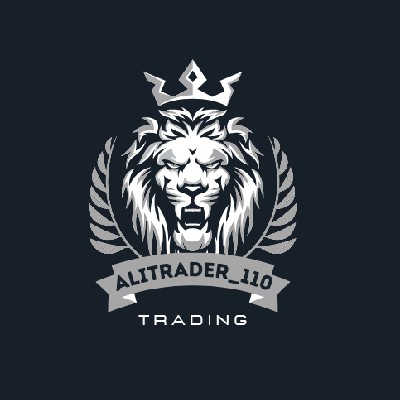AVAIL/TWD 匯率換算器
Avail 市場資訊
今日Avail即時價格TWD
您認為今天 Avail 價格會上漲還是下跌?
目前您已了解 Avail 今日價格,您也可以了解:
如何購買 Avail(AVAIL)?如何出售 Avail(AVAIL)?什麼是 Avail(AVAIL)?如果您購買了 Avail (AVAIL) ,會發生什麼事?今年、2030 年和 2050 年的 Avail (AVAIL) 價格預測?哪裡可以下載 Avail (AVAIL) 的歷史價格數據?今天其他同類型加密貨幣的價格是多少?想要立即獲取加密貨幣?
使用信用卡直接購買加密貨幣。在現貨平台交易多種加密貨幣,以進行套利。Avail價格預測
什麼時候是購買 AVAIL 的好時機? 我現在應該買入還是賣出 AVAIL?
AVAIL 在 2026 的價格是多少?
2026 年,基於 +5% 的預測年增長率,Avail(AVAIL)價格預計將達到 NT$0.2866。基於此預測,投資並持有 Avail 至 2026 年底的累計投資回報率將達到 +5%。更多詳情,請參考2025 年、2026 年及 2030 - 2050 年 Avail 價格預測。AVAIL 在 2030 年的價格是多少?
Avail (AVAIL) 簡介
什麼是 AVAIL(AVAIL)?
Avail (AVAIL) 是一個 Web3 基礎設施層,設計來增強區塊鏈網路的可擴展性、互通性和安全性。它透過模組化方法實現此目標,整合了三個主要組件:Avail DA(Data Availability)、Avail Nexus 和 Avail Fusion。這些組件共同構成了 Avail 統一層,此為一個綜合框架,解決區塊鏈技術中的關鍵問題,並以信任最小化的方式實現不同執行層之間的順暢互動。
Avail 由 Anurag Arjun 和 Prabal Banerjee 創立,於 2020 年從 Polygon Labs 中脫穎而出,並於 2023 年成為獨立實體。在 Figment、Dragonfly、Nomad、SevenX 和Founders Fund 等著名創投家的支持下,Avail 旨在統一分散的區塊鏈生態系,並為開發者和用戶提供一個可擴展、安全和可互通的平台。
AVAIL 如何運作?
Avail 的核心是數據可用性(DA)層,它確保所有交易數據可用且可驗證,而不需要全節點下載整個區塊。此層利用擦除編碼和 KZG 多項式承諾等創新安全技術,來提供數據完整性的加密證明。透過專注於數據可用性,DA 層允許包括 EVM 和 WASM 在內的各種執行環境順暢運行,使其成為各種區塊鏈應用程式的多功能基礎。
Nexus 層是 Avail 的另一個重要組件。它是一個 ZK-rollups,可以聚合證明並選擇排序器,充當 Avail 生態系內外 rollups 無需許可的驗證中心。透過利用 Avail DA 作為信任根,Nexus Layer 確保跨生態系交易的安全和高效。此層設計來簡化用戶體驗,無論用戶是與單一 Rollup 互動、在 Avail 內導航多個 Rollup,還是與外部區塊鏈生態系互動。
融合安全層 (Fusion Security Layer) 是 Avail 統一層的補充,它增強了 Avail 網路的整體安全性。Fusion 使比特幣和以太坊等主要生態系的原生資產能夠與 Avail 的原生資產一起質押,進而增強網路的加密經濟安全性。這種方法使 Avail 能夠利用現有的成熟資產來推動共識,也是利用 ETH 和 BTC 等其他代幣來保護不同區塊鏈的首批實例之一。透過匯集流動性和增強安全性,融合安全層確保 Avail 仍然是 Web3 的強大且可靠的基礎設施層。
AVAIL 代幣有什麼用途?
AVAIL 代幣是 Avail 生態系的主要代幣。該代幣在 Avail 基礎設施中具有多種用途,包括質押和治理。用戶可以在整個網路中質押 AVAIL 代幣以獲得獎勵,為網路的安全性和穩定性做出貢獻。產品發表時將提供詳細的質押指南,使用戶能夠有效參與網路。
除了質押之外,AVAIL 代幣在治理中也扮演著至關重要的角色。由於 Avail 採用分階段的治理方法,代幣持有者將有機會影響決策、並塑造生態系的未來方向。這種參與確保了 Avail 網路保持去中心化和社群驅動,與 Web3 的更廣泛原則保持一致。
Avail 是一項好的投資嗎?
確定 Avail 是否是一項良好的投資取決於多種因素,包括其技術、市場地位,以及 Web3 生態系中的整體採用。Avail 旨在解決區塊鏈可擴展性、互通性和安全性方面的關鍵挑戰,這對於去中心化應用程式的未來成長至關重要。投資者應考慮該項目實現其目標的能力以及其模組化技術堆疊,對更廣泛的區塊鏈領域的潛在影響。
然而,與加密貨幣領域的所有投資一樣,Avail 也存在風險,包括市場波動、監管變化和技術挑戰。潛在投資者在做出任何投資決定之前,應進行徹底的研究,以了解項目的最新進展,並考慮自己的風險承受能力。了解項目的基本原理並及時掌握項目的發展,有助於做出明智的投資選擇。
如何購買 Avail(AVAIL)?
想投資 Avail(AVAIL)嗎?只需 2 分鐘,即可在 Bitget 上建立帳戶 ,並開始交易 AVAIL。
Avail 的相關文章:
Bitget 觀點



您可以用 Avail (AVAIL) 之類的加密貨幣做什麼?
輕鬆充值,快速提領買入增值,賣出套利進行現貨交易套利進行合約交易,高風險和高回報透過穩定利率賺取被動收益使用 Web3 錢包轉移資產什麼是 Avail,以及 Avail 是如何運作的?
全球Avail價格
購買其他幣種
常見問題
Avail 的目前價格是多少?
Avail 的 24 小時交易量是多少?
Avail 的歷史最高價是多少?
我可以在 Bitget 上購買 Avail 嗎?
我可以透過投資 Avail 獲得穩定的收入嗎?
我在哪裡能以最低的費用購買 Avail?
相關加密貨幣價格
Bitget 平台新上架幣種的價格
熱門活動
您可以在哪裡購買Avail(AVAIL)?
影片部分 - 快速認證、快速交易










